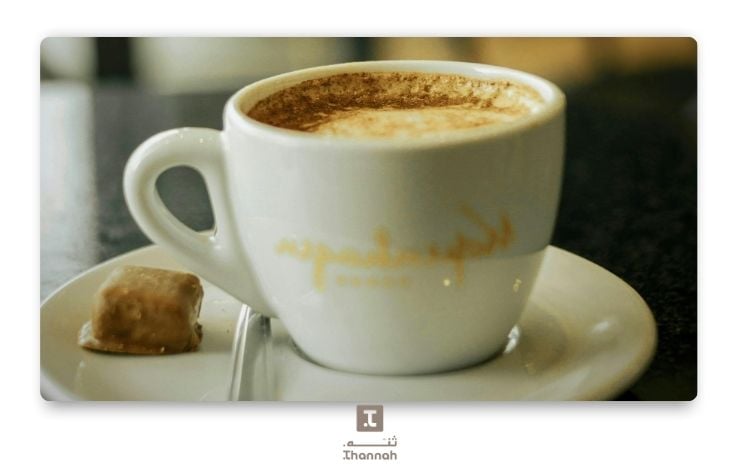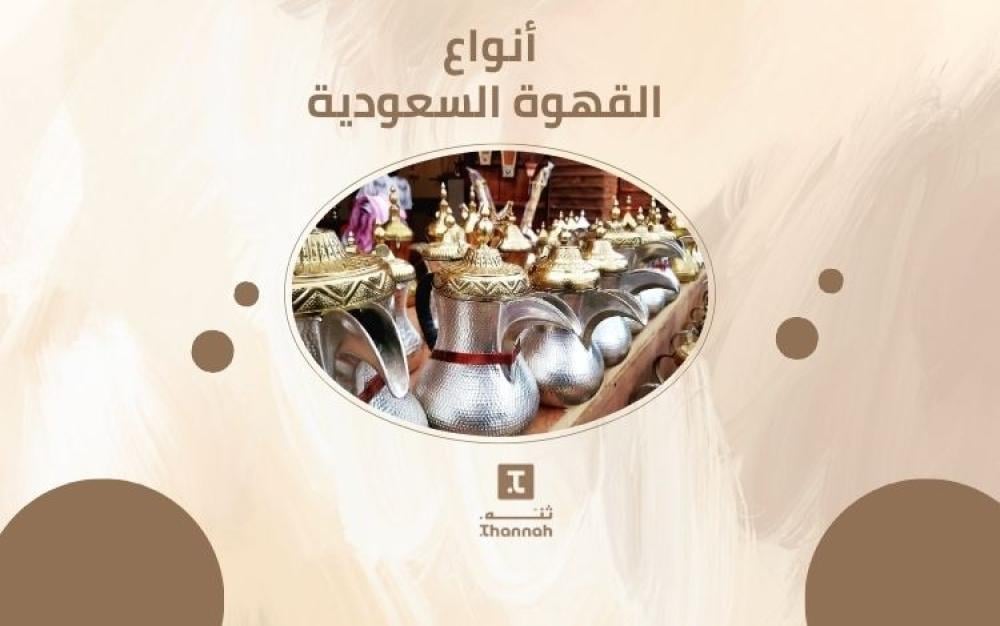In 1437 AH, the Kingdom registered Saudi (Arabic) coffee on the Representative List of the Intangible Cultural Heritage of Humanity of the United Nations Educational, Scientific and Cultural Organization (UNESCO).
Saudi coffee offers a variety of flavors, from traditional Arabic coffee to green coffee, blended coffee, and more. They reflect the cultural diversity of the Kingdom and express the diverse tastes of its diverse flavors.
Saudi coffee
Coffee in the Kingdom is a well-known tradition and culture, dating back centuries. It was known as Arabic coffee until 2022, when the Saudi Ministry of Culture renamed it Saudi coffee.
It is consumed at all times and occasions, such as evening gatherings with friends and family, as well as weddings and funerals, and is considered the main drink served to guests.
Saudi coffee differs from coffee in other countries, through flavors such as cardamom, cloves, saffron, rose water, and ginger, as well as the method of preparation, which is boiled in a pot.
Why is Saudi coffee called by this name?
Until 2022, coffee in the Kingdom was called Arabic coffee, as in other Arab countries. However, the Ministry of Commerce has directed commercial establishments to adopt the term "Saudi coffee" instead of "Arabic coffee." This is due to several reasons, including the following:
- Strengthening national identity, as coffee is a cultural and popular heritage of the Kingdom.
- The Kingdom's history of coffee cultivation and production reflects its values and traditions.
- Celebrating the Ministry of Culture's initiative to designate 2020 as the Year of Saudi Coffee.
- Celebrating coffee as a distinctive cultural product of Saudi Arabia, and marketing it locally and internationally.
- Encouraging the coffee industry and production in the Kingdom, and promoting its sale domestically and internationally.
Types of Saudi coffee
There are many types of Arabic coffee, depending on the flavors, roasting method, and preparation method, as well as the diverse cultures in the Kingdom, as follows:
Original (traditional) coffee
It is considered one of the best and most famous types of Saudi coffee. It is distinguished by its strong aroma, as ground coffee beans are roasted and blended with other flavors, such as cloves, cardamom, and saffron.
The ground mixture is used in a pot with water and then left on the stove for a certain period of time, resulting in a special and distinctive taste, especially for lovers of black or bitter coffee. It is consumed in small cups.
green coffee
One of the most popular types of Saudi coffee, green coffee beans are obtained without roasting, then ground and prepared with hot or cold water for healthy consumption.
Dari coffee
Dari coffee is one of the most popular types of coffee in the areas inhabited by the Kingdom's Bedouins, who love to drink its strong flavor. It is commonly consumed during evening gatherings and friendly gatherings among family and friends.
blended coffee
It closely resembles the original coffee, blending roasted coffee with other flavorings and spices, such as ginger, saffron, and qayyal, and is widely used in Saudi Arabia.
Qurashi coffee
It is considered one of the best types of Arabic coffee, and is widely consumed in regions such as Asir, Jazan, Najran, and Al Baha, where it is distinguished by the quality of its beans, soft texture, and special taste.
Arabic coffee with milk
Milk is added to coffee to give it a different, creamier flavor, something many Saudis love. It is prepared by mixing authentic Arabic coffee with milk and then placing them in a pot over low heat.
The best types of Arabic coffee in Riyadh
The capital is famous for its many varieties of Saudi coffee, including the ones mentioned above and other types such as cold coffee, saffron coffee, date coffee, and others.
How to prepare Saudi coffee
Saudi coffee is prepared by boiling roasted coffee beans mixed with different flavors in a coffee pot or a special coffee machine, then drinking it in a small cup.
Saudi coffee differs from other Arab countries in that it is roasted lightly, and therefore contains large amounts of caffeine. Therefore, it is served in smaller cups.

The best types of Arabica coffee
Although coffee is generally divided into two main types, Arabica and Robusta, there are many other types of coffee in the Kingdom of Saudi Arabia, including the following:
green coffee
Green coffee beans are dried without roasting, so the chlorogenic acid content is higher, while roasted beans have lower levels.
Blonde roasted coffee
This type of coffee is lightly roasted, so the beans always appear light brown in color, and their taste remains special and unique.
medium coffee
This coffee is used in the finest Saudi coffees, as it has a neutral acidity, is free of fatty surfaces, and has a beautiful aromatic flavor.
dark coffee
Also called black coffee, it is roasted for a long time, requires intense temperatures, and is used in bitter Saudi coffees.
Best Coffee Shops in Saudi Arabia
Thana Factory and Store is one of the best coffee and tea shops in Saudi Arabia , specializing in the manufacture and preparation of authentic Arabic coffee and Saudi tea.
The store uses innovative methods to manufacture various quantities of coffee and tea, such as easy-to-use packages and capsules, while relying on the best manufacturing, packaging, and serving techniques.
The store provides Finest Saudi coffee products , such as mild blonde coffee and Saudi saffron coffee capsules , as well as high-quality tea products, such as northern tea and Jamr tea.
Shop now for the finest coffee and tea
Get the finest Saudi coffee and tea at very reasonable and competitive prices, with delivery service to all regions of the Kingdom, by calling 966500996649 or 966500996649.
Frequently Asked Questions
What are the types of Saudi coffee?
There are many types of Saudi coffee, such as the original traditional, Dariya, Qurashi, and others.
What is the most popular type of coffee in Saudi Arabia?
There are many types of coffee, such as dark, medium, green, and blonde roast.
Read also: Everything you need to know about coffee: its history, types, and benefits.

